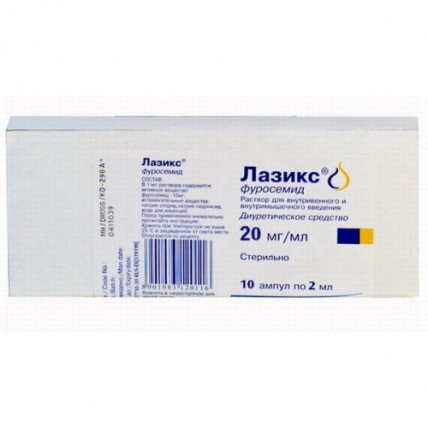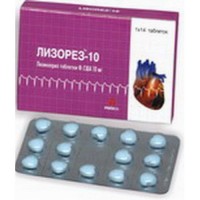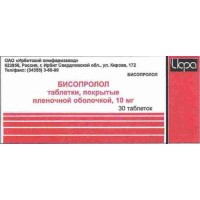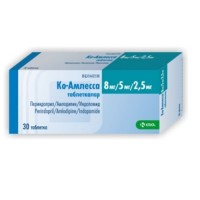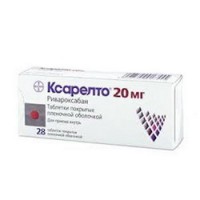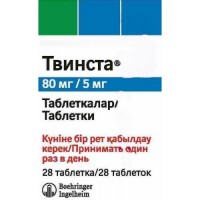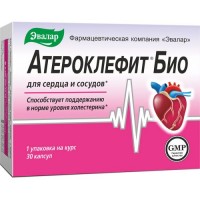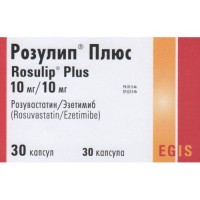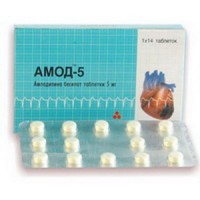Lasix 20 mg / 2 ml 10s solution for intramuscular and intravenous administration
- $15.90
The instruction for medical use
medicine
Лазикс®
the Trade name
of Laziks®
the International unlicensed
name Furosemide Dosage Form Solution for intravenous and intramuscular administration of 10 mg/ml
Structure
of 1 ml of solution contains
active agent – furosemide of 10 mg,
excipients: sodium chloride, sodium hydroxide, water for injections.
Description
Transparent, colourless solution.
Pharmacotherapeutic
Loopback group diuretics. Sulfanamide diuretics.
The code of automatic telephone exchange C03CA01
the Pharmacological
Pharmacokinetics Volume properties of distribution of furosemide makes 0.1 - 0.2 liters on 1 kg of body weight. The volume of distribution can be higher, depending on a disease of the patient. Communication with proteins of blood plasma of 98%, generally with albumine. Furosemide is removed from an organism mainly in not changed look, mainly through proximal tubules of kidneys. After intravenous administration of 60%-70% of furosemide it is removed in such way.
The glucuronide – a furosemide metabolite from 10% to 20% is found in urine in the restored look. The remained dose is allocated together with a stake probably owing to biliary secretion. Elimination half-life of furosemide after intravenous administration makes from 1 to 1.5 hours.
Furosemide is emitted in breast milk. Furosemide passes a placental barrier and slowly gets to a fruit. It is found in an organism of a fruit or in an organism of newborns in the same concentration as mother's organism.
A pharmacodynamics
Lasixum – highly effective, quickly and quickly operating loopback diuretic. Blocks the Na+K+2Cl-transport system located in a lyuminalny cellular membrane of the ascending part of a Henle's loop. Therefore the efficiency of diuretic effect of Lasixum depends on achievement by medicine of level of renal tubules via the anion transport mechanism. Diuretic action is caused by suppression of a reabsorption of ions of chlorine and sodium in this segment of a Henle's loop. As a result, partial discharge of sodium can reach 35% of glomerular filtration of sodium. The strengthened urine discharge (as a result of osmotically connected water) and increase in secretion of potassium ions in a distal part of renal tubules is a consequence of increase in secretion of sodium. Also discharge of calcium and magnesium increases.
Lasixum interrupts a tubular and glomerular feedback mechanism in macula densa owing to what diuretic action is not weakened. Lasixum leads system renin-angiotensin-aldosteronovoy to dose-dependent stimulation.
In heart failure Lasixum causes fast decrease in an afterload (by expansion of venous vessels). This early sosudistny effect is mediated through stimulation of prostaglandins, the renal blood stream with activation system renin-angiotenzinovoy as a result increases. Moreover, because of the natriuretic effect, Lasixum reduces sensitivity of a vascular wall to catecholamines which is increased at patients with arterial hypertension.
Antihypertensive effect of Lasixum is based on increase in discharge of sodium, decrease in volume of blood and lowering of reaction of smooth muscles of vessels to vasoconstrictive incentives.
At intravenous administration in a dose of 20 mg the beginning of diuretic effect is observed in 15 minutes and duration is about 3 hours.
Continuous infusion of Lasixum is more effective, than repeated injections of a shock drug dose. Important the fact that the dose over a certain shock dose of medicine has no considerable effect.
Effect of Lasixum decreases at patients with reduced tubular secretion or at intra tubular linking of medicine with proteins.
Indications
- an edematous syndrome in chronic stagnant heart failure (if treatment by diuretics)
- an edematous syndrome is required in acute stagnant heart failure
- an edematous syndrome in chronic kidney disease
- liquid discharge maintenance in an acute renal failure, including at pregnancy and childbirth
- the hypostases caused by a nephrotic syndrome (if treatment is required by diuretics)
- an edematous syndrome in liver diseases (if additional treatment by antagonists of Aldosteronum)
- arterial hypertension
- hypertensive crisis (as maintenance therapy is necessary)
- maintenance of an artificial diuresis
the Route of administration and doses
Is recommended to use the most effective smallest dose of drug.
For intravenous and intramuscular administration.
The intravenous way of administration of Lasixum is applied only when the oral way is impossible or inefficient (for example, disturbance of intestinal absorption) or if the fast effect is required. Transition from a parenteral form to peroral has to be carried out as soon as possible.
For achievement of optimum efficiency and suppression of antiregulation the continuation of injections by Lasixum in the form of repeated bolyusny injections is recommended.
In case continuation of injections of Lasixum is impossible, for further treatment after one or several sharp doses entered in the form of a bolus, the subsequent mode should be continued by low doses through short intervals (about 4 hours). It is more preferable, than treatment by high bolyusny doses with long intervals.
The adult the recommended maximum daily dose makes 1500 mg.
To children the recommended dose makes 2 mg/kg of body weight, the maximum daily dose is equal to 40 mg. To children the recommended dose at parenteral administration makes 1 mg/kg of body weight, the maximum daily dose is equal to 20 mg. The dose to children can be reduced depending on body weight.
Duration of treatment depends on the indication and is defined individually by the doctor.
Method of administration
Intravenous injections / infusions: at intravenous administration Lasixum should be entered slowly, rate of administering should not exceed 4 mg a minute.
To patients with heavy disturbance of renal function (creatinine level in serum> 5 mg/dl) the rate of administering of 2.5 mg a minute is recommended not to exceed.
Intramuscular injections are appointed in exceptional cases when oral or intravenous administration of drug is impossible.
The intramuscular way of introduction is inapplicable for treatment of acute conditions, for example, of a fluid lungs.
The following dosages for adults are recommended (doses for parenteral and oral administration as in most cases treatment by Lasixum assumes need of transition from a parenteral way of introduction to peroral are specified):
The Recommended initial oral dose makes an edematous syndrome in chronic stagnant heart failure from 20 mg to 80 mg a day. This dose should be divided into 2 or 3 receptions, and it is necessary to adjust as necessary according to the clinical answer.
The Recommended initial intravenous dose makes an edematous syndrome in acute stagnant heart failure from 20 mg to 40 mg in the form of a bolyusny injection. The dose should be adjusted as necessary according to the clinical answer.
The edematous syndrome in chronic kidney disease
Natriuretic reaction of Lasixum depends on a number of factors, including weight of a renal failure and sodium balance therefore the effect of a dosage cannot be precisely calculated. For patients with chronic kidney disease the dose of Lasixum has to be carefully a protitrovana so that initial loss of liquid was gradual. The dose which leads to liquid loss is approximately equal to 2 kg of body weight (about 280 mmol of sodium) a day.
The recommended initial oral dose is equal from 40 mg to 80 mg a day. The dose should be adjusted as necessary according to the clinical answer. The daily dose should be accepted in 1 or 2 receptions.
For the patients who are on dialysis, the usual supporting oral dose makes from 250 mg to 1500 mg a day.
At intravenous administration Lasixum begin to enter by continuous intravenous infusion in a dose 0.1 mg a minute, then gradually increasing rate of administering everyone half an hour taking into account the clinical answer.
Liquid discharge maintenance in an acute renal failure
the Hypovolemia, hypotension, the significant disturbances of electrolytic and acid-base balance have to be corrected prior to treatment by Lasixum. The recommended transition from administration of Lasixum, intravenous on the oral way, has to be carried out as soon as possible.
The recommended initial dose for intravenous administration makes 40 mg. If this dosage does not lead to desirable discharge of liquid, intravenous administration of Lasixum can be continued, since 50 mg up to 100 mg each hour.
Makes the hypostases caused by a nephrotic syndrome the Recommended initial oral dose from 40 mg to 80 mg a day. The dose should be adjusted as necessary according to the clinical answer. The daily dose should be accepted in one or several receptions.
The edematous syndrome in liver diseases
Lasixum is applied as additional therapy with antagonists of Aldosteronum in cases when some antagonists are not enough. In order to avoid complications, such as orthostatic reaction or disturbance of electrolytic and acid-base balance, the dose has to be carefully a protitrovana so that initial loss of liquid was gradual. The dose which leads to liquid loss is approximately equal to 0.5 kg of body weight a day.
The recommended initial oral dose is equal from 20 mg to 80 mg a day. The dose should be adjusted as necessary according to the clinical answer. The daily dose should be accepted in one or several receptions. In need of intravenous administration the initial single dose makes from 20 mg to 40 mg.
Arterial hypertension
Lasixum can independently be used or in a combination with other antigipertenzionny means. The usual supporting oral dose is equal from 20 mg to 40 mg a day. In the arterial hypertension connected with chronic kidney disease the increase in a dose can be required.
The Recommended initial dose for intravenous administration makes hypertensive crisis from 20 mg to 40 mg. The dose should be adjusted as necessary according to the clinical answer.
Maintenance of an artificial diuresis in poisonings
Intravenous administration of Lasixum is recommended as addition to infusion electrolytic solutions. The dose depends on response to Lasixum. Losses of liquid and electrolytes have to be modified to or during therapy. In case of poisoning with acid or alkaline substances further removal can be increased by alkalization or oxidation of urine.
The recommended intravenous initial dose – from 20 to 40 mg.
Side effects
- disturbances of electrolytic balance: the hyponatremia, a hypochloraemia, a hypopotassemia, a hypomagnesiemia and a metabolic alkalosis
- dehydration and a hypovolemia, especially at elderly patients
is increase in blood of creatinine and urea, temporary and reversible
- increase in serumal levels of cholesterol and triglycerides
- increase in level of uric acid in blood that can lead to emergence of attacks of gout
- decrease in tolerance to glucose. At the patients having diabetes there can come the demonstration latentno of the proceeding diabetes
- lowering of arterial pressure, including orthostatic hypotension
- tendency to development of thromboses
- a vasculitis
- a sharp ischuria at patients with partial obstruction of uric ways
- interstitial nephrite
- at premature children the forming of kaltsiysoderzhashchy nephroliths (nephrolithiasis) and adjournment of salts of calcium in a parenchyma of kidneys (nephrocalcinosis)
- nausea, vomiting, diarrhea
- acute pancreatitis
- an intra hepatic cholestasia, increase in level of transaminases of a liver
- hearing disorder and sonitus is possible, usually reversible especially at patients with a renal failure and signs of a hypoproteinemia (nephrotic syndrome) and/or after too fast administration of Lasixum intravenously
- an itching, urticaria, bullous rashes, a multimorfny erythema, bullous pemphigoid, exfoliative dermatitis, a purpura, a photosensitization
- heavy anaphylactoid and anaphylactic reactions (shock)
- paresthesias
- hepatic encephalopathy at patients with hepatocellular insufficiency
- thrombocytopenia, a leukopenia, an eosinophilia, an agranulocytosis, aplastic or hemolytic anemia, haemo concentration
- at premature children within the first weeks of life furosemide can increase risk of not fusion of Botallov Canal
- fervescence
- pain in the injection site after an intramuscular injection
of the Contraindication
- hypersensitivity to furosemide or to any of drug components, at hypersensitivity to sulfonamides, to antibiotics or drugs of sulphonylurea the cross sensitivity to furosemide
- a hypovolemia or dehydration
- the renal failure with an anury which is not responding to treatment by furosemide
- a heavy hypopotassemia
- a heavy hyponatremia
- the hepatic coma and a prekoma caused by hepatic encephalopathy can be observed
-
Medicinal interactions
not recommended combinations
In some cases intravenous prescribing of Lasixum within 24 hours after intake of Chlorali hydras can lead the breastfeeding period to rushes of blood, excess sweating, concern, nausea, increase in arterial blood pressure, tachycardia. Therefore joint intake of Lasixum and Chlorali hydras is not recommended.
Ototoxicity of aminoglycosides and other ototoksichny drugs can amplify at simultaneous use of Lasixum. As the hearing disorder arising at the same time can be irreversible, such simultaneous use should be avoided, except for cases, when necessary according to vital indications.
The combinations demanding special precautions
At simultaneous use of Lasixum and Cisplatinum risk of development of ototoksichesky action is possible. If at treatment by Cisplatinum achievement of an artificial diuresis by means of Lasixum is necessary, then the last can be appointed, only in a low dosage (for example, 40 mg at normal function of kidneys) and in the absence of deficiency of liquid. Otherwise strengthening of nephrotoxic effect of Cisplatinum is possible.
Under the influence of Lasixum the lithium removal decreases at the expense of what the damaging impact of lithium on heart and nervous system amplifies. Levels of lithium have to monitorirovatsya carefully at the patients receiving this combination.
Treatment by Lasixum can lead to heavy hypotension and deterioration in function of kidneys, and in some cases – to development of an acute renal failure, especially when prescribing inhibitors of the angiotensin-converting enzyme (ACE) or antagonists of receptors of angiotensin II for the first time or at the first reception in the raised dose. Furosemide cancellation, or reduction of a dose of furosemide in 3 days prior to treatment by APF inhibitors or antagonists of receptors of angiotensin II is recommended.
With care it is necessary to apply Lasixum in a combination with risperidony. At elderly patients with weak-mindedness mortality at combined use of Lasixum and a risperidon increases. Need of combined use has to be proved taking into account risk and advantage of this combination. In the presence of dehydration at elderly patients with weak-mindedness, at use of a combination the mortality risk increases, at these patients it is necessary to avoid the combined intake of Lasixum with risperidony.
Including acetylsalicylic acid, the effect of Lasixum can lower combinations which it is necessary to take Co-administration of non-steroidal anti-inflammatory drugs (NPVS) into account. With dehydration or a hypovolemia of NPVS can cause an acute renal failure in patients. At the same time the toxic effect of salicylates can increase.
Also decrease in efficiency of Lasixum at Phenytoinum co-administration is described.
At simultaneous treatment by glucocorticosteroids, karbenoksolony, a licorice in large amounts, and prolonged use of laxatives the hypopotassemia can amplify.
The possible hypopotassemia or a hypomagnesiemia can increase sensitivity of a myocardium to the cardiac glycosides and medicines leading to lengthening of an interval of QT.
Effect of other medicines lowering arterial blood pressures (antihypertensive, diuretic and other drugs) can be strengthened at simultaneous use with Lasixum.
Simultaneous use of a probenetsid, methotrexate and other means which are removed by canalicular secretion (as well as Lasixum) can reduce efficiency of Lasixum. On the other hand Lasixum can lead to decrease in renal elimination of these medicines.
At treatment by high doses (Lasixum and other drugs) increase in their levels in blood serum and increase in risk of development of side effects is possible.
Efficiency of hypoglycemic means and pressor amines (for example, epinephrine (adrenaline), Norepinephrinum (noradrenaline), it can be weakened, and theophylline and kurarepodobny means – it is strengthened.
Lasixum can strengthen the damaging action on kidneys of nephrotoxic drugs.
At the patients who are at the same time receiving treatment by Lasixum and some cephalosporins in high doses the deterioration in renal function is possible.
At simultaneous use of cyclosporine A and Lasixum the increase in risk of developing secondary gouty arthritis owing to the Lasixum-induced hyperuricemia and deterioration in the removal of urates kidneys caused by cyclosporine is possible.
Patients with high risk of development of a radio contrast nephropathy, treated Lasixum, are more subject to disturbances of renal function after receiving radiocontrast substance in comparison with patients with high risk which received only intravenous hydration before receiving radiocontrast substance.
Special indications
of the Precautionary measure
during therapy by the drug Lasixum control of amount of the emitted urine is necessary. Especially carefully it is necessary to control patients with urine outflow disturbance (disorders of bladder emptying, a prostatauxe, narrowing of an urethra), the increased formation of urine can cause or strengthen complaints of the patient. Such patients need to carry out careful monitoring of a state, especially during an initiation of treatment.
At treatment by Lasixum it is necessary to perform regular medical examination, especially careful observation is necessary:
- in hypotension
- at risk of a considerable lowering of arterial pressure, for example, at patients with a stenosis of coronary arteries or arteries of a brain
- in the latent or demonstrating diabetes
- in gout
- in a renal failure in combination with a serious illness of a liver (gepatorenalny syndrome)
- at decrease in level of protein in blood (hypoproteinemia), for example, at a nephrotic syndrome (the effect of therapy can be reduced by Lasixum and ototoksichesky action amplifies). Careful selection of a dose is necessary.
- at premature children is (nephrolithiasis/nephrocalcinosis), regular control of function of kidneys and ultrasound examination of kidneys is recommended.
During therapy by Lasixum it is necessary to control periodically levels of sodium, potassium and creatinine in blood serum. Patients with high risk of development of disturbances of electrolytic exchange and also in cases with additional loss of liquid (vomiting, diarrhea, the increased sweating) it is necessary to observe carefully.
A hypovolemia or dehydration as well as disturbances in balance of electrolytes and in an acid-base state, have to be corrected. Perhaps temporary termination of therapy by Lasixum.
Pregnancy and the period of feeding by a breast
Lasixum gets through a placental barrier. During pregnancy Lasixum should not be applied, except for necessary cases on medical indications. Treatment by Lasixum during pregnancy demands careful observation of a condition of a fruit.
Lasixum gets into maternal milk and suppresses a lactation. Women should stop breastfeeding during treatment by Lasixum.
Features of influence of medicine on ability to run the vehicle or potentially dangerous mechanisms
Some side effects, in particular, falling of arterial blood pressure, can reduce abilities to concentration of attention and fast reaction that represents risk for the persons running vehicles and working with potentially dangerous mechanisms.
The overdose
the Clinical picture of acute or chronic overdose of drug depends, generally on the lost volume of liquid and electrolytes: hypovolemia, dehydration, haemo concentration, disturbances of a heart rhythm (including atrioventricular block and fibrillation of ventricles).
Symptoms of these disturbances include the significant decrease in the ABP (up to development of shock), an acute renal failure, thrombosis, delirious conditions, sluggish paralyzes, apathy and confusion of consciousness.
The symptomatic treatment directed to restriction and decrease in further absorption of drug, gastric lavage, use of activated carbon. Specific antidote does not exist.
Clinically important disturbances of electrolytic and water exchange need to be adjusted. Along with prevention and treatment of serious violations as a result of similar disturbances of an action for correction have to include the general and specific measures of intensive medical observation and therapeutic measures.
A form of release and packing
Solution for intravenous and intramuscular administration of 10 mg/ml.
On 2 ml of drug in ampoules from glass of amber color type I with a white dot (line of a break) above a neck.
On 10 ampoules together with the instruction for medical use in the state and Russian languages put in a cardboard pack.
To Store storage conditions in the place protected from light at a temperature not over 25C. To store out of children's reach!
A period of storage
3 years
After an expiration date it is impossible to use drug.
Prescription status
According to the prescription
of Proizvoditel Aventis Pharm Ltd, India
the location Address: 54/A, Sir Mathuradas Vasanji Road, Andheri (E), Mumbai 400,093, India
the Address of the organization accepting in the territory of the Republic of Kazakhstan claims from consumers on quality of products (goods)
050016 Almaty, Kunayev St. 21B
phone number: 8-727-244-50-96
fax: 8-727-258-25-96
e-mail:
To Develop quality.info@sanofi-aventis.com
medicine
Лазикс®
the Trade name
of Laziks®
the International unlicensed
name Furosemide Dosage Form Solution for intravenous and intramuscular administration of 10 mg/ml
Structure
of 1 ml of solution contains
active agent – furosemide of 10 mg,
excipients: sodium chloride, sodium hydroxide, water for injections.
Description
Transparent, colourless solution.
Pharmacotherapeutic
Loopback group diuretics. Sulfanamide diuretics.
The code of automatic telephone exchange C03CA01
the Pharmacological
Pharmacokinetics Volume properties of distribution of furosemide makes 0.1 - 0.2 liters on 1 kg of body weight. The volume of distribution can be higher, depending on a disease of the patient. Communication with proteins of blood plasma of 98%, generally with albumine. Furosemide is removed from an organism mainly in not changed look, mainly through proximal tubules of kidneys. After intravenous administration of 60%-70% of furosemide it is removed in such way.
The glucuronide – a furosemide metabolite from 10% to 20% is found in urine in the restored look. The remained dose is allocated together with a stake probably owing to biliary secretion. Elimination half-life of furosemide after intravenous administration makes from 1 to 1.5 hours.
Furosemide is emitted in breast milk. Furosemide passes a placental barrier and slowly gets to a fruit. It is found in an organism of a fruit or in an organism of newborns in the same concentration as mother's organism.
A pharmacodynamics
Lasixum – highly effective, quickly and quickly operating loopback diuretic. Blocks the Na+K+2Cl-transport system located in a lyuminalny cellular membrane of the ascending part of a Henle's loop. Therefore the efficiency of diuretic effect of Lasixum depends on achievement by medicine of level of renal tubules via the anion transport mechanism. Diuretic action is caused by suppression of a reabsorption of ions of chlorine and sodium in this segment of a Henle's loop. As a result, partial discharge of sodium can reach 35% of glomerular filtration of sodium. The strengthened urine discharge (as a result of osmotically connected water) and increase in secretion of potassium ions in a distal part of renal tubules is a consequence of increase in secretion of sodium. Also discharge of calcium and magnesium increases.
Lasixum interrupts a tubular and glomerular feedback mechanism in macula densa owing to what diuretic action is not weakened. Lasixum leads system renin-angiotensin-aldosteronovoy to dose-dependent stimulation.
In heart failure Lasixum causes fast decrease in an afterload (by expansion of venous vessels). This early sosudistny effect is mediated through stimulation of prostaglandins, the renal blood stream with activation system renin-angiotenzinovoy as a result increases. Moreover, because of the natriuretic effect, Lasixum reduces sensitivity of a vascular wall to catecholamines which is increased at patients with arterial hypertension.
Antihypertensive effect of Lasixum is based on increase in discharge of sodium, decrease in volume of blood and lowering of reaction of smooth muscles of vessels to vasoconstrictive incentives.
At intravenous administration in a dose of 20 mg the beginning of diuretic effect is observed in 15 minutes and duration is about 3 hours.
Continuous infusion of Lasixum is more effective, than repeated injections of a shock drug dose. Important the fact that the dose over a certain shock dose of medicine has no considerable effect.
Effect of Lasixum decreases at patients with reduced tubular secretion or at intra tubular linking of medicine with proteins.
Indications
- an edematous syndrome in chronic stagnant heart failure (if treatment by diuretics)
- an edematous syndrome is required in acute stagnant heart failure
- an edematous syndrome in chronic kidney disease
- liquid discharge maintenance in an acute renal failure, including at pregnancy and childbirth
- the hypostases caused by a nephrotic syndrome (if treatment is required by diuretics)
- an edematous syndrome in liver diseases (if additional treatment by antagonists of Aldosteronum)
- arterial hypertension
- hypertensive crisis (as maintenance therapy is necessary)
- maintenance of an artificial diuresis
the Route of administration and doses
Is recommended to use the most effective smallest dose of drug.
For intravenous and intramuscular administration.
The intravenous way of administration of Lasixum is applied only when the oral way is impossible or inefficient (for example, disturbance of intestinal absorption) or if the fast effect is required. Transition from a parenteral form to peroral has to be carried out as soon as possible.
For achievement of optimum efficiency and suppression of antiregulation the continuation of injections by Lasixum in the form of repeated bolyusny injections is recommended.
In case continuation of injections of Lasixum is impossible, for further treatment after one or several sharp doses entered in the form of a bolus, the subsequent mode should be continued by low doses through short intervals (about 4 hours). It is more preferable, than treatment by high bolyusny doses with long intervals.
The adult the recommended maximum daily dose makes 1500 mg.
To children the recommended dose makes 2 mg/kg of body weight, the maximum daily dose is equal to 40 mg. To children the recommended dose at parenteral administration makes 1 mg/kg of body weight, the maximum daily dose is equal to 20 mg. The dose to children can be reduced depending on body weight.
Duration of treatment depends on the indication and is defined individually by the doctor.
Method of administration
Intravenous injections / infusions: at intravenous administration Lasixum should be entered slowly, rate of administering should not exceed 4 mg a minute.
To patients with heavy disturbance of renal function (creatinine level in serum> 5 mg/dl) the rate of administering of 2.5 mg a minute is recommended not to exceed.
Intramuscular injections are appointed in exceptional cases when oral or intravenous administration of drug is impossible.
The intramuscular way of introduction is inapplicable for treatment of acute conditions, for example, of a fluid lungs.
The following dosages for adults are recommended (doses for parenteral and oral administration as in most cases treatment by Lasixum assumes need of transition from a parenteral way of introduction to peroral are specified):
The Recommended initial oral dose makes an edematous syndrome in chronic stagnant heart failure from 20 mg to 80 mg a day. This dose should be divided into 2 or 3 receptions, and it is necessary to adjust as necessary according to the clinical answer.
The Recommended initial intravenous dose makes an edematous syndrome in acute stagnant heart failure from 20 mg to 40 mg in the form of a bolyusny injection. The dose should be adjusted as necessary according to the clinical answer.
The edematous syndrome in chronic kidney disease
Natriuretic reaction of Lasixum depends on a number of factors, including weight of a renal failure and sodium balance therefore the effect of a dosage cannot be precisely calculated. For patients with chronic kidney disease the dose of Lasixum has to be carefully a protitrovana so that initial loss of liquid was gradual. The dose which leads to liquid loss is approximately equal to 2 kg of body weight (about 280 mmol of sodium) a day.
The recommended initial oral dose is equal from 40 mg to 80 mg a day. The dose should be adjusted as necessary according to the clinical answer. The daily dose should be accepted in 1 or 2 receptions.
For the patients who are on dialysis, the usual supporting oral dose makes from 250 mg to 1500 mg a day.
At intravenous administration Lasixum begin to enter by continuous intravenous infusion in a dose 0.1 mg a minute, then gradually increasing rate of administering everyone half an hour taking into account the clinical answer.
Liquid discharge maintenance in an acute renal failure
the Hypovolemia, hypotension, the significant disturbances of electrolytic and acid-base balance have to be corrected prior to treatment by Lasixum. The recommended transition from administration of Lasixum, intravenous on the oral way, has to be carried out as soon as possible.
The recommended initial dose for intravenous administration makes 40 mg. If this dosage does not lead to desirable discharge of liquid, intravenous administration of Lasixum can be continued, since 50 mg up to 100 mg each hour.
Makes the hypostases caused by a nephrotic syndrome the Recommended initial oral dose from 40 mg to 80 mg a day. The dose should be adjusted as necessary according to the clinical answer. The daily dose should be accepted in one or several receptions.
The edematous syndrome in liver diseases
Lasixum is applied as additional therapy with antagonists of Aldosteronum in cases when some antagonists are not enough. In order to avoid complications, such as orthostatic reaction or disturbance of electrolytic and acid-base balance, the dose has to be carefully a protitrovana so that initial loss of liquid was gradual. The dose which leads to liquid loss is approximately equal to 0.5 kg of body weight a day.
The recommended initial oral dose is equal from 20 mg to 80 mg a day. The dose should be adjusted as necessary according to the clinical answer. The daily dose should be accepted in one or several receptions. In need of intravenous administration the initial single dose makes from 20 mg to 40 mg.
Arterial hypertension
Lasixum can independently be used or in a combination with other antigipertenzionny means. The usual supporting oral dose is equal from 20 mg to 40 mg a day. In the arterial hypertension connected with chronic kidney disease the increase in a dose can be required.
The Recommended initial dose for intravenous administration makes hypertensive crisis from 20 mg to 40 mg. The dose should be adjusted as necessary according to the clinical answer.
Maintenance of an artificial diuresis in poisonings
Intravenous administration of Lasixum is recommended as addition to infusion electrolytic solutions. The dose depends on response to Lasixum. Losses of liquid and electrolytes have to be modified to or during therapy. In case of poisoning with acid or alkaline substances further removal can be increased by alkalization or oxidation of urine.
The recommended intravenous initial dose – from 20 to 40 mg.
Side effects
- disturbances of electrolytic balance: the hyponatremia, a hypochloraemia, a hypopotassemia, a hypomagnesiemia and a metabolic alkalosis
- dehydration and a hypovolemia, especially at elderly patients
is increase in blood of creatinine and urea, temporary and reversible
- increase in serumal levels of cholesterol and triglycerides
- increase in level of uric acid in blood that can lead to emergence of attacks of gout
- decrease in tolerance to glucose. At the patients having diabetes there can come the demonstration latentno of the proceeding diabetes
- lowering of arterial pressure, including orthostatic hypotension
- tendency to development of thromboses
- a vasculitis
- a sharp ischuria at patients with partial obstruction of uric ways
- interstitial nephrite
- at premature children the forming of kaltsiysoderzhashchy nephroliths (nephrolithiasis) and adjournment of salts of calcium in a parenchyma of kidneys (nephrocalcinosis)
- nausea, vomiting, diarrhea
- acute pancreatitis
- an intra hepatic cholestasia, increase in level of transaminases of a liver
- hearing disorder and sonitus is possible, usually reversible especially at patients with a renal failure and signs of a hypoproteinemia (nephrotic syndrome) and/or after too fast administration of Lasixum intravenously
- an itching, urticaria, bullous rashes, a multimorfny erythema, bullous pemphigoid, exfoliative dermatitis, a purpura, a photosensitization
- heavy anaphylactoid and anaphylactic reactions (shock)
- paresthesias
- hepatic encephalopathy at patients with hepatocellular insufficiency
- thrombocytopenia, a leukopenia, an eosinophilia, an agranulocytosis, aplastic or hemolytic anemia, haemo concentration
- at premature children within the first weeks of life furosemide can increase risk of not fusion of Botallov Canal
- fervescence
- pain in the injection site after an intramuscular injection
of the Contraindication
- hypersensitivity to furosemide or to any of drug components, at hypersensitivity to sulfonamides, to antibiotics or drugs of sulphonylurea the cross sensitivity to furosemide
- a hypovolemia or dehydration
- the renal failure with an anury which is not responding to treatment by furosemide
- a heavy hypopotassemia
- a heavy hyponatremia
- the hepatic coma and a prekoma caused by hepatic encephalopathy can be observed
-
Medicinal interactions
not recommended combinations
In some cases intravenous prescribing of Lasixum within 24 hours after intake of Chlorali hydras can lead the breastfeeding period to rushes of blood, excess sweating, concern, nausea, increase in arterial blood pressure, tachycardia. Therefore joint intake of Lasixum and Chlorali hydras is not recommended.
Ototoxicity of aminoglycosides and other ototoksichny drugs can amplify at simultaneous use of Lasixum. As the hearing disorder arising at the same time can be irreversible, such simultaneous use should be avoided, except for cases, when necessary according to vital indications.
The combinations demanding special precautions
At simultaneous use of Lasixum and Cisplatinum risk of development of ototoksichesky action is possible. If at treatment by Cisplatinum achievement of an artificial diuresis by means of Lasixum is necessary, then the last can be appointed, only in a low dosage (for example, 40 mg at normal function of kidneys) and in the absence of deficiency of liquid. Otherwise strengthening of nephrotoxic effect of Cisplatinum is possible.
Under the influence of Lasixum the lithium removal decreases at the expense of what the damaging impact of lithium on heart and nervous system amplifies. Levels of lithium have to monitorirovatsya carefully at the patients receiving this combination.
Treatment by Lasixum can lead to heavy hypotension and deterioration in function of kidneys, and in some cases – to development of an acute renal failure, especially when prescribing inhibitors of the angiotensin-converting enzyme (ACE) or antagonists of receptors of angiotensin II for the first time or at the first reception in the raised dose. Furosemide cancellation, or reduction of a dose of furosemide in 3 days prior to treatment by APF inhibitors or antagonists of receptors of angiotensin II is recommended.
With care it is necessary to apply Lasixum in a combination with risperidony. At elderly patients with weak-mindedness mortality at combined use of Lasixum and a risperidon increases. Need of combined use has to be proved taking into account risk and advantage of this combination. In the presence of dehydration at elderly patients with weak-mindedness, at use of a combination the mortality risk increases, at these patients it is necessary to avoid the combined intake of Lasixum with risperidony.
Including acetylsalicylic acid, the effect of Lasixum can lower combinations which it is necessary to take Co-administration of non-steroidal anti-inflammatory drugs (NPVS) into account. With dehydration or a hypovolemia of NPVS can cause an acute renal failure in patients. At the same time the toxic effect of salicylates can increase.
Also decrease in efficiency of Lasixum at Phenytoinum co-administration is described.
At simultaneous treatment by glucocorticosteroids, karbenoksolony, a licorice in large amounts, and prolonged use of laxatives the hypopotassemia can amplify.
The possible hypopotassemia or a hypomagnesiemia can increase sensitivity of a myocardium to the cardiac glycosides and medicines leading to lengthening of an interval of QT.
Effect of other medicines lowering arterial blood pressures (antihypertensive, diuretic and other drugs) can be strengthened at simultaneous use with Lasixum.
Simultaneous use of a probenetsid, methotrexate and other means which are removed by canalicular secretion (as well as Lasixum) can reduce efficiency of Lasixum. On the other hand Lasixum can lead to decrease in renal elimination of these medicines.
At treatment by high doses (Lasixum and other drugs) increase in their levels in blood serum and increase in risk of development of side effects is possible.
Efficiency of hypoglycemic means and pressor amines (for example, epinephrine (adrenaline), Norepinephrinum (noradrenaline), it can be weakened, and theophylline and kurarepodobny means – it is strengthened.
Lasixum can strengthen the damaging action on kidneys of nephrotoxic drugs.
At the patients who are at the same time receiving treatment by Lasixum and some cephalosporins in high doses the deterioration in renal function is possible.
At simultaneous use of cyclosporine A and Lasixum the increase in risk of developing secondary gouty arthritis owing to the Lasixum-induced hyperuricemia and deterioration in the removal of urates kidneys caused by cyclosporine is possible.
Patients with high risk of development of a radio contrast nephropathy, treated Lasixum, are more subject to disturbances of renal function after receiving radiocontrast substance in comparison with patients with high risk which received only intravenous hydration before receiving radiocontrast substance.
Special indications
of the Precautionary measure
during therapy by the drug Lasixum control of amount of the emitted urine is necessary. Especially carefully it is necessary to control patients with urine outflow disturbance (disorders of bladder emptying, a prostatauxe, narrowing of an urethra), the increased formation of urine can cause or strengthen complaints of the patient. Such patients need to carry out careful monitoring of a state, especially during an initiation of treatment.
At treatment by Lasixum it is necessary to perform regular medical examination, especially careful observation is necessary:
- in hypotension
- at risk of a considerable lowering of arterial pressure, for example, at patients with a stenosis of coronary arteries or arteries of a brain
- in the latent or demonstrating diabetes
- in gout
- in a renal failure in combination with a serious illness of a liver (gepatorenalny syndrome)
- at decrease in level of protein in blood (hypoproteinemia), for example, at a nephrotic syndrome (the effect of therapy can be reduced by Lasixum and ototoksichesky action amplifies). Careful selection of a dose is necessary.
- at premature children is (nephrolithiasis/nephrocalcinosis), regular control of function of kidneys and ultrasound examination of kidneys is recommended.
During therapy by Lasixum it is necessary to control periodically levels of sodium, potassium and creatinine in blood serum. Patients with high risk of development of disturbances of electrolytic exchange and also in cases with additional loss of liquid (vomiting, diarrhea, the increased sweating) it is necessary to observe carefully.
A hypovolemia or dehydration as well as disturbances in balance of electrolytes and in an acid-base state, have to be corrected. Perhaps temporary termination of therapy by Lasixum.
Pregnancy and the period of feeding by a breast
Lasixum gets through a placental barrier. During pregnancy Lasixum should not be applied, except for necessary cases on medical indications. Treatment by Lasixum during pregnancy demands careful observation of a condition of a fruit.
Lasixum gets into maternal milk and suppresses a lactation. Women should stop breastfeeding during treatment by Lasixum.
Features of influence of medicine on ability to run the vehicle or potentially dangerous mechanisms
Some side effects, in particular, falling of arterial blood pressure, can reduce abilities to concentration of attention and fast reaction that represents risk for the persons running vehicles and working with potentially dangerous mechanisms.
The overdose
the Clinical picture of acute or chronic overdose of drug depends, generally on the lost volume of liquid and electrolytes: hypovolemia, dehydration, haemo concentration, disturbances of a heart rhythm (including atrioventricular block and fibrillation of ventricles).
Symptoms of these disturbances include the significant decrease in the ABP (up to development of shock), an acute renal failure, thrombosis, delirious conditions, sluggish paralyzes, apathy and confusion of consciousness.
The symptomatic treatment directed to restriction and decrease in further absorption of drug, gastric lavage, use of activated carbon. Specific antidote does not exist.
Clinically important disturbances of electrolytic and water exchange need to be adjusted. Along with prevention and treatment of serious violations as a result of similar disturbances of an action for correction have to include the general and specific measures of intensive medical observation and therapeutic measures.
A form of release and packing
Solution for intravenous and intramuscular administration of 10 mg/ml.
On 2 ml of drug in ampoules from glass of amber color type I with a white dot (line of a break) above a neck.
On 10 ampoules together with the instruction for medical use in the state and Russian languages put in a cardboard pack.
To Store storage conditions in the place protected from light at a temperature not over 25C. To store out of children's reach!
A period of storage
3 years
After an expiration date it is impossible to use drug.
Prescription status
According to the prescription
of Proizvoditel Aventis Pharm Ltd, India
the location Address: 54/A, Sir Mathuradas Vasanji Road, Andheri (E), Mumbai 400,093, India
the Address of the organization accepting in the territory of the Republic of Kazakhstan claims from consumers on quality of products (goods)
050016 Almaty, Kunayev St. 21B
phone number: 8-727-244-50-96
fax: 8-727-258-25-96
e-mail:
To Develop quality.info@sanofi-aventis.com
